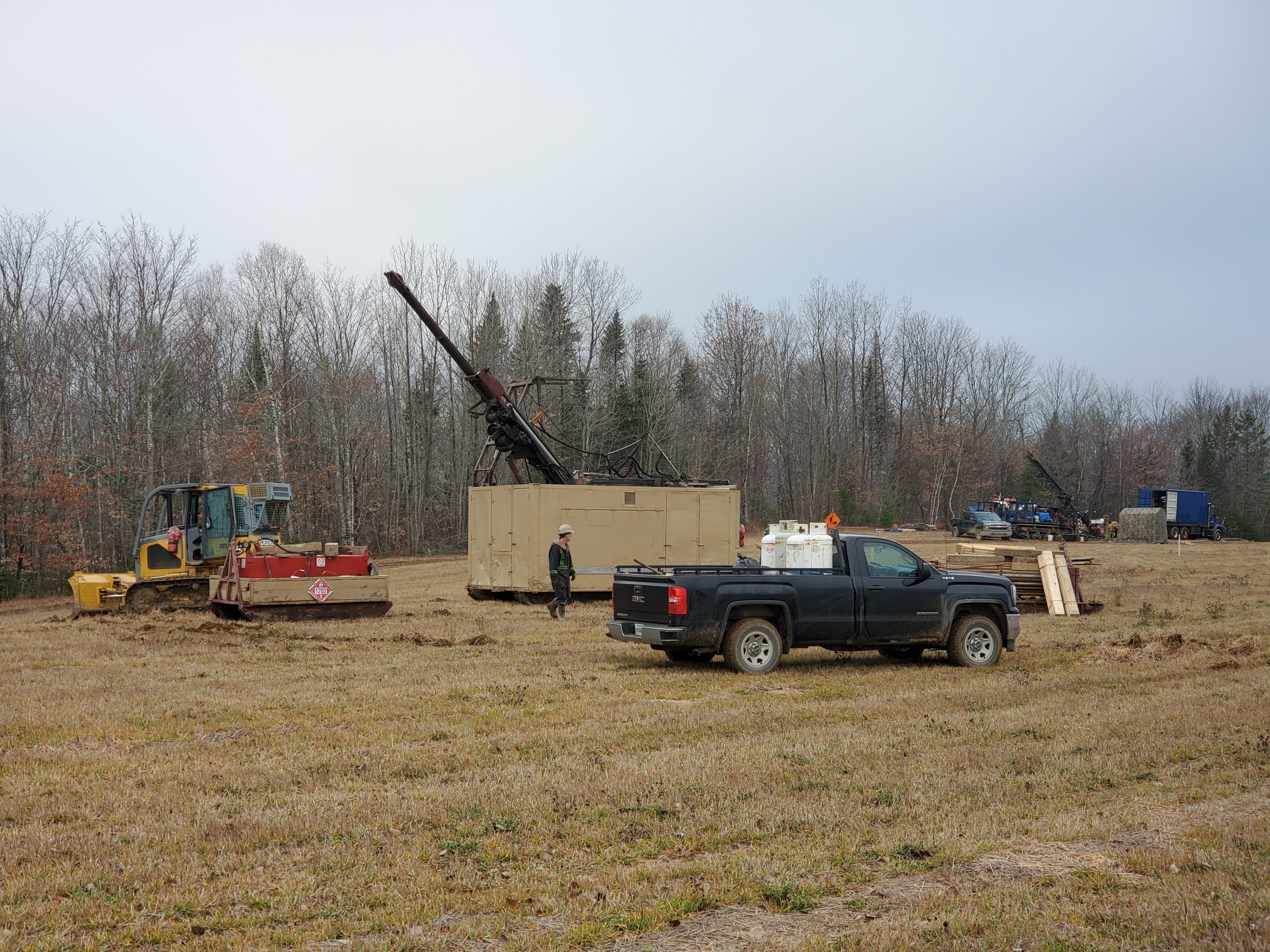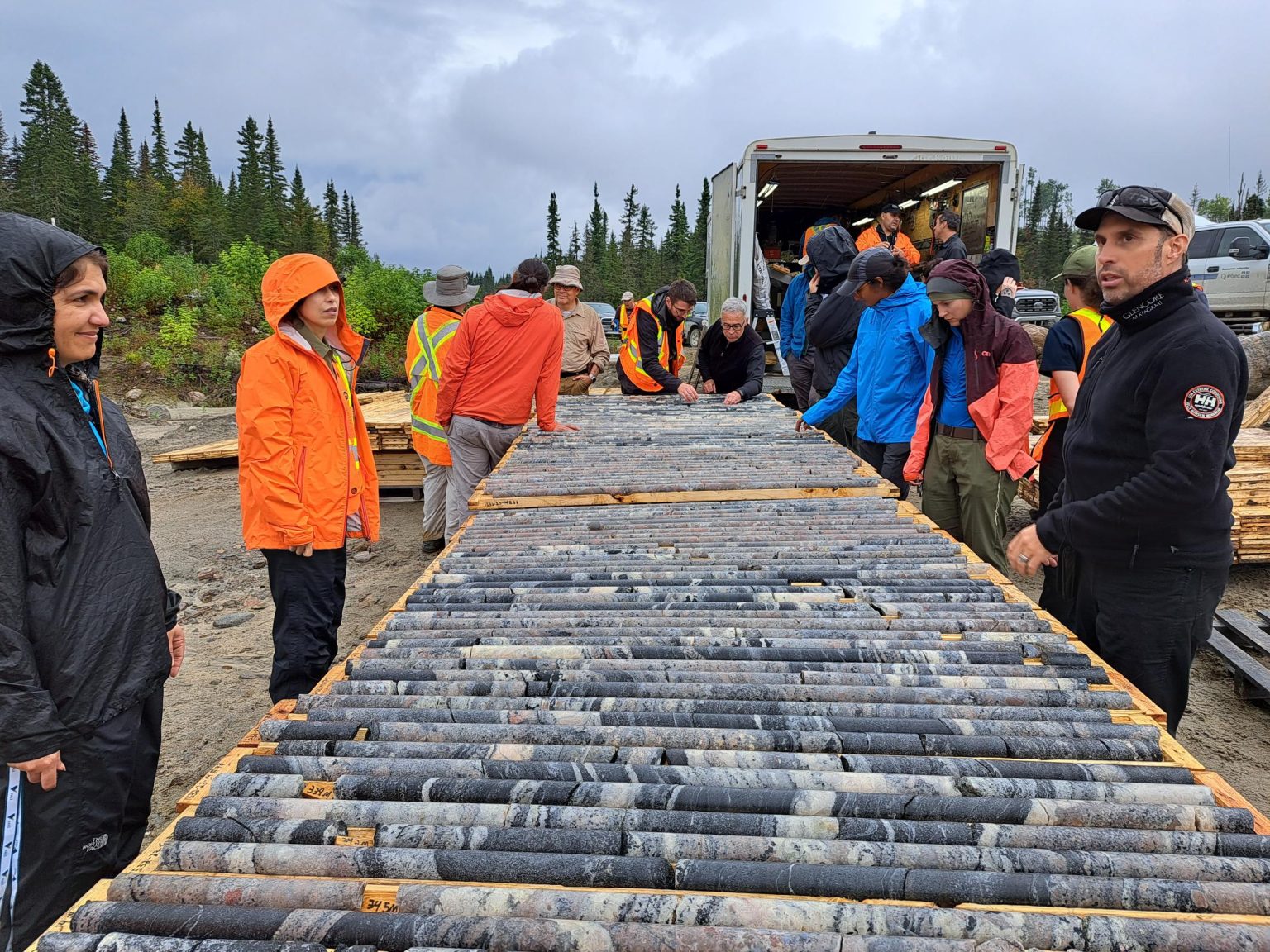One of a Kind
Primary palladium producers are rare undertakings. There are only two in the world. One belongs to Toronto’s North American Palladium. NAP’s Lac des Iles mine lies 85 km northwest of Thunder Bay, Ont., and is the target of expansion both to boost output and to cut production costs.
The Lac des Iles mine is “unique in the world,” says NAP president Bill Biggar. “All the others are narrow vein deposits. Our mineralization is broadly disseminated, making the orebody suitable for highly mechanized bulk mining.
“We are excited about where we are with this operation,” he added. “The world’s mine supply of palladium is flat, and demand is rising.”
The other primary palladium producer is the narrow vein Stillwater mine in Montana. Russia produces 50% of the world’s palladium, followed closely by South Africa, but in both countries, palladium is a by-product of other metal mining (nickel and platinum, respectively).
The Lac des Iles expansion has a budget of $260 million, and is on target to spend that amount by the time the shaft is commissioned at the end of this year. Output will grow from 160,000 oz to 250,000 oz/y in 2015, and cash costs are expected to retreat to the $200 an ounce range.
Discovered in 1963, the Roby zone at Lac des Iles was not delineated until the end of the 1980s. Commercial production from the high-grade Roby open pit began in 1993 eventually reaching 15,000 t/d and a new mill was built. Underground mining via ramp access of the Roby zone began in 2006 at a significantly lower rate, leaving the mill underutilized. The mine and mill were placed on care-and-maintenance in late 2008 in the wake of the global financial crisis.
The period of care-and-maintenance allowed NAP to concentrate its efforts on exploration at its Lac des Iles property. The Offset zone, discovered in 2001, was delineated and enlarged, for example. Then three new zones (Cowboy, Outlaw, and Sheriff) were discovered in close proximity to the Offset zone. With these exploration successes, the potential for expansion became a reality.
Underground production resumed in the spring of 2010 at the current rate of 2,600 t/d from the Roby zone using the existing ramp system. The zone is developed in vertical blocks at intervals of 95 metres with two sub-levels in between and mined using sublevel retreat longitudinal longhole stoping with unconsolidated rock fill, the zone is currently producing approximately 2,700 tonnes of ore daily. As soon as production (and cash flow) resumed, NAP began planning an expansion to 5,500 t/d as a means of reducing unit production costs and boosting production.
The Offset zone is only 300 metres west of the Roby zone. It is estimated to contain 2.35 million oz of palladium. To develop the Offset zone, the ramp is being lengthened to the 955-metre level and ultimately the 1,240-metre level. The zone has been defined from approximately 600 to 1,300 metres below surface over a strike length of 600 metres. It is near vertical, dipping approximately 80° with a horizontal thickness of 25 to 30 metres, and the ground is extremely competent.
The Offset zone will be mined in two phases. Phase 1 involves continuing mining via ramp from the 740-metre level with truck haulage to the surface until the new shaft is commissioned at the end of this year. The mining rate will then be increased to 3,500 t/d as stoping begins on the 955-metre level in 2013. Over 2013 and 2014, the mining rate will increase further to 5,500 t/d by 2015 as more stopes are developed for production. Mining is to be done in 35-metre wide panels, half of which will be backfilled. Backfilling will improve pillar recovery and increase safety.
To accommodate the planned 5,500 t/d mining rate, a 6-metre diameter, 1,370-metre deep shaft is being sunk. The original plan was to raisebore a 7.5-metre diameter shaft. A combination of hard rock and the large diameter borer head caused NAP to modify its sinking method. Instead of boring the full diameter of the shaft along the pilot hole, a 2.5-metre opening was raisebored to permit conventional shaft slashing for the shaft construction. Now a shaft sinking crew from Dumas Contracting is slashing the shaft to its finished diameter of approximately 6.0 metres.
The first phase of the shaft sinking to the 795-metre level is to be completed by the end of this year. With a hoisting capacity of 7,000 t/d, it is deliberately oversized. Given the large exploration upside at the property, the larger capacity will be a boon in a few years.
Exploration upside
The expanded Lac des Iles mine is underpinned by measured and indicated resources of 37.8 million tonnes containing more than 4.1 million oz of palladium (3.39 g/t Pd, 0.26 g/t Pt, 0.21 g/t Au, 0.09% Ni and 0.06% Cu). But those numbers reflect only the Roby and Offset zones.
Also, the Offset zone remains open at depth and to the south, and there are sub-parallel structures further to the west that appear to have economical mineralization that will easily be accessible by the underground from the Offset zone development.
The potential for resource expansion is tremendous. The three new zones – Cowboy, Outlaw and Sheriff – have been drilled, but no resource estimates applied to them to date.
The Cowboy zone was discovered in 2009 lying 30 to 50 metres west of the Offset zone. To date, it has been traced 250 metres along strike and 300 metres down dip. The Outlaw zone lies west of Cowboy, but it has not yet been defined by drilling. The Sheriff zone, 100 metres southeast of the Offset zone, was intersected in 2010, and is the least explored zone of the three.
The 2012 exploration budget at Lac des Iles is $16 million. About $10 million is earmarked for underground exploration in the Offset zone because it is important to outline and develop new stopes. The remaining amount will be spent on grassroots exploration. NAP’s property in northern Ontario covers 12,140 hectares, but only a tiny portion near the Lac des Iles mine has been explored thoroughly.
It’s easy to see that there is vast potential when one considers that the geology throughout the property is similar to that now being mined. Knowing that palladium mine production is not growing elsewhere in the world and demand is rising, the future for North American Palladium will undoubtedly shine.
THE LAC DES ILES MILL
The Lac des Iles mill was commissioned in 2001. It is a conventional flotation plant featuring SAG and ball milling, followed by three-stage flotation and two-stage regrinding. A nickel-copper concentrate grading 300 to 600 g/t Pd is produced; the palladium content varying with the head grade. The concentrate is further treated at Xstrata’s facilities near Sudbury, Ont.
The mill, at 15,000 t/d, is oversized for the amount of ore available so it has become a batch operation. The mill runs two weeks on/two weeks off. CMJ has been told that batch operation will probably continue even at the increased throughput of 5,500 t/d.





Comments